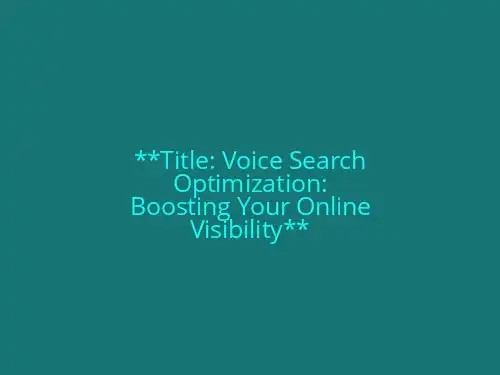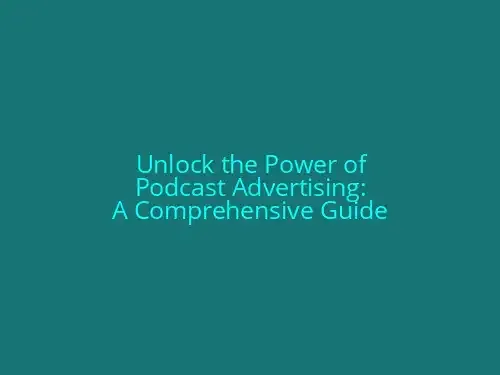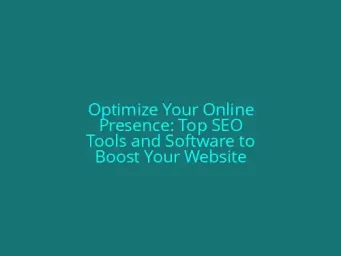
Effective B2B Marketing Strategies for Business Success
Here is the content for section 1 of the article:\n### I. Introduction\n**Definition of B2B Marketing**\nB2B marketing refers to the strategic processes and tactics used to promote products or services from one business to another. Unlike B2C (business-to-consumer) marketing, B2B marketing involves a more complex and targeted approach due to the higher value and longer sales cycles of B2B transactions.\n**Importance of Effective Marketing Strategies for B2B Companies**\nIn the B2B world, effective marketing strategies are crucial for driving growth, increasing ROI, and establishing a competitive edge. This is because B2B buyers are often meticulous and thorough in their research, considering multiple factors and evaluating different options before making a purchase decision. To succeed, B2B companies must develop and execute comprehensive marketing plans that cater to the needs and pain points of their target audience.\nBy understanding these fundamental principles, businesses can create targeted marketing strategies that resonate with their audience and drive business success. In the following sections, we will explore the key B2B marketing strategies and tactics that can help you achieve your goals, including search engine optimization (SEO), email marketing, content marketing, and social media marketing.\n---\nThis introduction sets the stage for the article by defining B2B marketing, highlighting its importance in the business world, and outlining the key strategies that will be discussed. It aims to provide a solid foundation for readers to understand the significance of effective B2B marketing and how it can drive business success.## B2B Marketing Strategies\n### II. B2B Marketing Strategies\n### 1. Search Engine Optimization (SEO)\n#### a. Keyword Research and Optimization\n- Identify target keywords and phrases relevant to your B2B business.\n- Conduct thorough keyword research using tools such as Google Keyword Planner and Ahrefs.\n- Optimize on-page elements like meta tags, headings, and image alt tags with targeted keywords.\n#### b. On-Page SEO Techniques\n- **Meta Tags**: Include meta title, meta description, and meta keywords.\n- **Headings**: Organize content using H2, H2, H3, and H4 headings.\n- **Image Optimization**: Use descriptive alt tags and captions to enhance image relevance and accessibility.\n#### c. Content Creation for SEO\n- **High-Quality Content**: Write engaging, informative, and well-structured blog posts.\n- **Variety in Content Form**: Use different formats like articles, videos, infographics, and podcasts.\n- **Targeted Content**: Address specific needs and pain points of your business clients.\n### 2. Email Marketing\n#### a. Segmenting Subscribers\n- **Categorize Subscribers**: Segment email lists based on demographics, preferences, and behaviors.\n- **Personalized Messages**: Tailor content to specific segments for higher engagement.\n#### b. Sending Different Types of Emails\n- **Newsletters**: Regular newsletters with company updates, promotions, and industry insights.\n- **Promotional Emails**: Special offers, discounts, and product announcements.\n- **Educational Emails**: In-depth guides, tutorials, and industry trends.\n#### c. Using Tools to Simplify the Emailing Process\n- **Email Marketing Software**: Utilize tools like Mailchimp, Constant Contact, or HubSpot for automation and analytics.\n### 3. Content Marketing\n#### a. Creating High-Quality, Informative Content\n- **Blog Posts**: Write detailed, well-researched blog posts on topics relevant to your target audience.\n- **Videos and Infographics**: Visual content formats to engage and educate your audience.\n#### b. Addressing the Needs of Business Clients\n- **Industry Insights**: Share knowledge and trends related to your industry.\n- **Product and Service Information**: Detailed explanations of your offerings, their features, and benefits.\n### 4. Social Media Marketing\n#### a. Creating and Maintaining Social Media Profiles\n- **Profile Optimization**: Complete profiles with relevant keywords, descriptions, and logos.\n- **Content Sharing**: Share content from other platforms, like blogs and websites.\n#### b. Paid Social Media Advertising\n- **Targeted Ads**: Use platforms like LinkedIn, Facebook, and Twitter for targeted paid advertising.\n- **Budget Allocation**: Allocate a budget for ad campaigns and monitor performance.\n#### c. Short-Form Video Marketing\n- **Short, Informative Videos**: Share short videos highlighting product features, company news, and industry insights.\nThese strategies will help you create a comprehensive B2B marketing plan, increasing visibility, engagement, and ultimately, conversions for your business-to-business marketing campaign.### III. Developing a B2B Marketing Plan\nDeveloping a B2B marketing plan involves several crucial steps that ensure your marketing efforts are focused, measurable, and aligned with your business goals. Here are the key components to include in your plan:\n#### 1. Defining the Marketing Mix\n* **Identify your target markets**: Determine which industries, companies, or specific roles your products or services cater to. This helps you tailor your marketing efforts to effectively reach and engage your audience.\n* **Outline your marketing objectives**: Clearly define what you want to achieve through your marketing strategy. This could include increasing brand awareness, generating leads, or boosting sales.\n#### 2. Creating a Marketing Strategy\n* **Marriage market conditions with company goals**: Align your marketing efforts with the needs and challenges of your target market, ensuring that your solutions address their pain points.\n* **Develop an actionable roadmap**: Break down your marketing objectives into actionable steps. This includes choosing the right marketing channels, setting budgets, and establishing timelines.\n* **Use a marketing plan template**: Utilize a template to organize your plan, ensuring that all essential elements are covered. This helps in keeping your plan structured and easy to execute.\nBy following these steps, you can create a comprehensive B2B marketing plan that sets you up for success. Remember to regularly review and refine your plan to ensure it remains effective in driving business growth and ROI improvement.### Developing a B2B Marketing Plan\nDeveloping a comprehensive B2B marketing plan is crucial for achieving success in the competitive business-to-business market. This plan serves as a blueprint for all marketing activities, ensuring that all efforts are aligned with the companys goals and objectives.\n#### 1. Defining the Marketing Mix\nTo start, identify your target markets and outline your marketing objectives. This involves understanding the demographics, objectives, behavior, and budget of your typical customers. This information helps in crafting a targeted marketing strategy.\n#### 2. Creating a Marketing Strategy\nThe marketing strategy builds upon the marketing mix by marrying market conditions with your companys goals. It provides an actionable roadmap with specific channels and metrics to measure success.\n#### Using a Marketing Plan Template\nTo streamline the process, use a marketing plan template. This template helps in compiling essential information such as business summary, target market, market strategy, budget, marketing channels, and marketing technology. It ensures that all necessary details are covered, and the plan remains flexible enough to adapt to changes as new data emerges.\nBy following these steps, you can create a robust B2B marketing plan that drives growth and improves ROI. The key is to maintain a focus on your target audience and continually refine your strategy based on performance metrics.\n---\nThis section provides a detailed overview of developing a B2B marketing plan, emphasizing the importance of a marketing mix and a marketing strategy. It also highlights the use of a marketing plan template to streamline the process. This information will help businesses establish a strong foundation for their marketing efforts and achieve long-term success.
read more →
Unlock Interactive Content for SEO Success
**Section 1: Introduction to Interactive Content**\n---------------------------------------------\n### Importance of User Engagement in SEO Rankings\n- **Briefly explain the importance of user engagement in SEO rankings**: Engaging users is crucial for SEO. It not only improves search engine visibility but also enhances the overall user experience.\n### Concept of Interactive Content\n- **Introduce the concept of interactive content and its benefits**: Interactive content, such as quizzes, polls, calculators, and games, is transforming the digital landscape. It captivates audiences, increases user engagement, and boosts SEO rankings.\n### Growing Popularity of Interactive Content\n- **Mention the growing popularity of interactive content in digital marketing**: Interactive content has become a game-changer in digital marketing. It is no longer just a novelty but a strategic tool for enhancing user engagement and SEO visibility.\n### Summary\nThis section establishes the significance of user engagement in SEO and introduces the concept of interactive content. It also highlights its growing popularity in digital marketing, laying the foundation for the rest of the article to explore the benefits and applications of interactive content in more depth.\n---\n### Meta Description\n------------------\nDiscover how interactive content like quizzes, polls, and calculators can captivate audiences and enhance search engine visibility. Learn how to incorporate interactive content into your SEO strategy.\n### Keywords\n------------\n- Interactive Content\n- SEO Rankings\n- User Engagement\n- Quizzes\n- Polls\n- Calculators\n- Games### What is Interactive Content?\nInteractive content is a crucial element in modern digital marketing, particularly in SEO strategies. It encompasses various formats like quizzes, polls, calculators, and games, designed to engage users and enhance their experience. These tools can be integrated into websites, social media, or email campaigns to capture users attention and encourage participation.\n#### Definition and Forms\nInteractive content is more than just a novelty; it serves a purpose. It can be categorized into different forms, each with its unique capabilities and benefits:\n- **Quizzes**: Interactive quizzes are an excellent way to educate users on specific topics. For instance, a mortgage calculator is helpful for real estate websites. This type of content not only educates but also encourages user participation and sharing.\n- **Polls**: Polls are a simple yet effective way to gather user feedback and encourage interaction. For e-commerce websites, a product preference poll can be beneficial in understanding customer preferences.\n- **Calculators**: Financial planning calculators for financial services websites are another example of interactive content. These tools provide valuable insights and improve user experience.\n- **Games**: Branded games can increase brand awareness and user engagement. They can be used for product promotion, entertainment, or both.\n#### Role in Enhancing User Experience\nInteractive content plays a pivotal role in enhancing the overall user experience. It keeps users engaged, encourages exploration, and provides a sense of accomplishment when completed. This can lead to increased dwell time and better user retention, ultimately improving SEO rankings.\n#### Examples of Successful Implementation\nSeveral successful examples of interactive content exist:\n- **Real Estate Website**: A mortgage calculator helps users navigate the complex process of mortgage planning, keeping users engaged throughout the process.\n- **E-commerce Website**: A product preference poll allows customers to vote on their favorite products, encouraging feedback and interaction.\n- **Financial Services Website**: A financial planning calculator helps users assess their financial readiness for specific goals, such as retirement planning.\n#### Benefits for SEO\nInteractive content significantly impacts SEO rankings by:\n* **Increasing User Engagement**: Users spend more time interacting with content, which signals a positive user experience to search engines.\n* **Enhancing Search Engine Visibility**: Relevant keywords embedded in interactive content improve search engine visibility.\n* **Improving Quality Score**: High-quality, interactive content boosts the quality score of a website, leading to better SEO rankings.\n#### Importance of Relevance and Quality\nRelevance and quality are crucial aspects of interactive content. Content must be tailored to the target audience and their needs. It should be engaging, informative, and easy to use. Otherwise, users will quickly lose interest, negatively impacting SEO rankings.\nThis section provides a comprehensive overview of interactive content and its role in enhancing user experience and SEO rankings.**Benefits of Interactive Content for SEO**\nInteractive content is crucial for SEO as it enhances user engagement, reduces bounce rates, and boosts dwell time. These metrics significantly influence search engine rankings. User engagement with interactive content can lead to higher click-through rates and increased conversions. Interactive content also allows for the collection of valuable user data, which can refine SEO strategies and improve user experiences.\nFor example, a mortgage broker using an interactive mortgage calculator can attract users who linger, engage, and convert. This increases the likelihood of the content being shared, creating backlinks that are vital for SEO. Effective SEO through interactive content demands relevance and quality, ensuring that the tools are genuinely useful and aligned with the target audiences needs.\nInteractive content integrates well with voice search optimization and AI-driven SEO strategies. This interactive approach mirrors conversational voice searches, making it essential in todays SEO landscape. By leveraging interactive content, businesses can elevate their SEO performance, drive more organic traffic, and boost conversions.### Types of Interactive Content\nInteractive content comes in various forms that cater to different audience preferences and needs. Here are some examples and explanations of how they can enhance user engagement and SEO rankings:\n#### Quizzes\n- **Example:** A mortgage calculator for real estate websites\n- **Explanation:** Quizzes can increase user participation and sharing. For instance, a mortgage calculator allows users to input their financial details and receive tailored mortgage options. This interactive element not only provides valuable insights but also encourages users to share their experience with others, thereby increasing backlinks and social media mentions.\n#### Polls\n- **Example:** A product preference poll for e-commerce websites\n- **Explanation:** Polls can encourage user feedback and interaction. For instance, a product preference poll can ask users to vote for their favorite product or feature. This interactive element not only provides valuable insights into user preferences but also prompts users to engage more and share their opinions with others, which can lead to increased backlinks and social media mentions.\n#### Calculators\n- **Example:** A financial planning calculator for financial services websites\n- **Explanation:** Calculators can provide valuable insights and improve user experience. For instance, a financial planning calculator can help users assess their financial readiness for a major purchase or investment. This interactive element not only provides accurate results but also encourages users to explore their financial options further, thereby increasing user engagement and dwell time.\n#### Games\n- **Example:** A branded game for product promotion\n- **Explanation:** Games can increase brand awareness and user engagement. For instance, a branded game can be designed to educate users about a products features and benefits. This interactive element not only entertains users but also encourages them to engage more with the brand, leading to increased brand loyalty and word-of-mouth marketing.\nBy incorporating these types of interactive content into your SEO strategy, you can effectively enhance user engagement and improve search engine rankings.
read more →
**Title: Voice Search Optimization: Boosting Your Online Visibility**
**The Ultimate Guide to Voice Search Optimization: Tips and Tricks for Boosting Your Online Visibility**\n### Table of Contents\n- **Introduction**\n - **What is Voice Search Optimization?**\n - **Why Voice Search Optimization Matters**\n - **How Voice Search Differs from Traditional Search**\n### I. Understanding Voice Search\n#### **How Voice Search Works**\nVoice search is a dialogue system that uses speech and text as input/output signals. It’s designed to communicate with humans, predicting and learning through massive amounts of data fed into it daily. Unlike traditional typing, voice search is more conversational and often includes longer, more detailed questions.\n#### **Voice Search Devices and Platforms**\nVoice search is used on various devices, including smartphones, smart speakers, digital home assistants, and smart appliances. These platforms are designed to feel like normal conversations with human assistants, such as Google Assistant, Apple Siri, Amazon Alexa, and Microsoft Cortana.\n#### **The Role of Voice Assistants in Voice Search**\nVoice assistants are central to voice search. They are trained to understand the nuances of human speech and provide quick, concise answers. This is different from traditional text searches, where users need to specify exact keywords.\n### II. Voice Search Optimization Techniques\n#### **1. Research and Target Voice Search Keywords**\nLong-tail keywords and conversational language are crucial for voice search optimization. Tools like Google Trends and Google Keyword Planner can help in identifying relevant voice search keywords. These keywords are often longer and more natural, such as how can I prepare my coffee at home? rather than coffee recipe.\n#### **2. Optimize for Conversational Language**\nOptimize your content to use natural language, mirroring the way people speak. This includes using verbals and phrases that resemble how people ask questions, like what are the best spas near me? instead of spas near me.\n#### **3. Use Structured Data and Schema Markup**\nStructured data and schema markup help search engines understand your content better. This includes adding schema markup to provide context and increase chances of winning SERP features.\n#### **4. Prioritize Local SEO**\nLocal SEO is crucial for voice search, especially for businesses with physical locations. Optimize for local voice search by including your business in local directories and ensuring your website is mobile-friendly.\n#### **5. Leverage Mobile Optimization**\nMobile optimization is vital for voice search, as many users perform voice searches on their mobile devices. Ensure your website loads quickly and is optimized for mobile devices.\n#### **6. Improve Website Speed and Performance**\nSite speed impacts voice search rankings. Optimize your website to load quickly and ensure it performs well on mobile devices.\n#### **7. Analyze and Monitor Voice Search Analytics**\nUnderstand voice search metrics and use tools to monitor analytics. This includes tracking voice search keywords, user behavior, and conversion rates to refine your optimization strategy.\n### III. Conclusion\nVoice search optimization is essential for boosting online visibility. By following these techniques and understanding how voice search works, you can increase your chances of appearing in voice search results and reach a wider audience.**II. Voice Search Optimization Techniques**\n### 1. Research and Target Voice Search Keywords\n- **Long-tail Keywords and Conversational Language**\n - Voice search queries are longer and more conversational compared to traditional searches. Optimize for long-tail keywords that mimic conversational phrases.\n - Tools like Google Keyword Planner and SEMrush can help you find relevant voice search keywords.\n### 2. Optimize for Conversational Language\n- **Natural Language Processing and User Intent**\n - Voice searches are more like natural conversations. Use natural language in your content to match user intent.\n - Write in a conversational tone that mirrors how users speak when asking their devices questions.\n### 3. Use Structured Data and Schema Markup\n- **Benefits of Schema Markup for Voice Search**\n - Structured data helps search engines understand your content better, increasing chances of being featured in voice search results.\n - Use schema markup to provide context and enhance your voice search rankings.\n### 4. Prioritize Local SEO\n- **The Importance of Local Voice Search**\n - Many voice searches are local in nature, such as finding nearby businesses. Optimize for local SEO to capture these searches.\n - Include local keywords, such as addresses and phone numbers, in your content.\n### 5. Leverage Mobile Optimization\n- **Why Mobile Optimization Is Crucial for Voice Search**\n - Most voice searches occur on mobile devices. Ensure your website is optimized for mobile to improve voice search rankings.\n - Follow best practices for mobile optimization, such as responsive design and fast loading speeds.\n### 6. Improve Website Speed and Performance\n- **The Impact of Site Speed on Voice Search Rankings**\n - Slow websites can negatively impact voice search rankings. Optimize your websites speed and performance.\n - Use tools like Google PageSpeed Insights to identify areas for improvement.\n### 7. Analyze and Monitor Voice Search Analytics\n- **Understanding Voice Search Metrics**\n - Track metrics like voice search traffic, conversion rates, and user engagement to refine your voice search optimization strategy.\n - Use tools like Google Analytics to monitor your voice search performance.\nThese techniques will help you optimize your website for voice search, increasing your online visibility and reaching more users who rely on voice assistants.### III. Advanced Voice Search Optimization Strategies\n#### 1. Create Valuable and Authoritative Content\nTo excel in voice search optimization, creating valuable and authoritative content is crucial. This includes content that answers commonly asked questions about your brand, services, products, and more. Focus on long-tail keywords that are conversational, and include those keywords naturally in your content. Ensure your content is well-structured and easy to understand, as voice search results tend to be short and concise.\n#### 2. Use FAQs and Answer Engine Optimization\nFAQs are instrumental in voice search optimization. They provide direct answers to the questions users ask, making them highly relevant for voice search. Optimize your FAQs by including long-tail keywords and structuring them in a way that mirrors how users ask questions—using conversational language. This increases the chances of your site appearing in voice search results.\n#### 3. Collaborate with Voice Assistant Platforms\nPartnering with voice assistant platforms like Google Assistant, Siri, Alexa, and Cortana can significantly boost your online visibility. These platforms often provide features such as featured snippets, knowledge panels, and other enhancements that improve your sites visibility in voice search results. Collaborate by integrating schema markup and structured data into your content to maximize these benefits.\n#### 4. Leverage User-Generated Content and Reviews\nUser-generated content and reviews play a vital role in voice search optimization. Positive reviews and ratings increase your sites credibility and trustworthiness, which are critical factors in voice search. Encourage users to leave reviews and engage with your content. This also helps in improving your local SEO, as voice search often involves local searches.\nBy incorporating these advanced voice search optimization strategies, you can significantly improve your online visibility, drive more traffic, and increase conversions. Remember to continuously monitor and analyze your performance to optimize and refine your strategies further.**Section 4: Advanced Voice Search Optimization Strategies**\n### 1. Create Valuable and Authoritative Content\n- **Content Types That Perform Well in Voice Search**: Long-form articles that answer questions in-depth, especially those related to local businesses and services.\n- **Content Creation Tips for Voice Search**: Use conversational language, include FAQs, and ensure content is informative and helpful.\n### 2. Use FAQs and Answer Engine Optimization\n- **Benefits of FAQs for Voice Search**: Users tend to ask specific questions, making FAQs a natural fit for voice search.\n- **Optimizing FAQs for Voice Search**: Include FAQs on your website in a logical and easy-to-follow format, as voice assistants often answer questions directly from FAQs.\n### 3. Collaborate with Voice Assistant Platforms\n- **Partnerships and Opportunities with Voice Assistants**: Partnering with voice assistant platforms can increase visibility and improve user engagement.\n- **Benefits of Collaborating with Voice Assistants**: Enhanced credibility, increased reach, and targeted marketing opportunities.\n### 4. Leverage User-Generated Content and Reviews\n- **The Impact of User Reviews on Voice Search**: Positive reviews increase credibility and trust, which voice assistants often prioritize.\n- **Encouraging User-Generated Content**: Encourage customers to share their experiences by offering incentives such as discounts or special deals.\nThese advanced strategies help you effectively optimize your content and voice search visibility, ensuring you reach more users effectively. By incorporating these techniques, you can improve your online presence and stay ahead in the competitive digital landscape.
read more →
Unlock the Power of Podcast Advertising: A Comprehensive Guide
**Introduction**\nPodcasting has become a powerful medium for reaching new audiences and building brand awareness. With over 3.2 million podcasts and a predicted growth of 504.9 million listeners by 2024, it is crucial for businesses to tap into this lucrative marketing channel. Podcast advertising offers an effective way for companies to connect with their target audience and drive engagement. In this article, we will explore the world of podcast advertising, its benefits, and how to get started with it.\nPodcasting presents a unique opportunity to leverage SEO and drive engaged listeners to your website. With advertising spend in podcasting expected to more than double, now is the perfect time to start a podcast for your business. Podcasting is no longer seen as niche; it has become a mainstream medium, making it an excellent platform for businesses to reach their customers.\n**Key Takeaways:**\n- **Podcasting is growing rapidly**: With millions of podcasts and listeners, it is an ideal platform for businesses to reach their target audience.\n- **Advertising spend is increasing**: With expected growth of over 3.2 million podcasts, now is the time to invest in podcast advertising.\n- **Podcast advertising is effective**: It offers a unique opportunity to connect with your target audience and drive engagement.\n**Why Podcast Advertising?**\nPodcast advertising provides a targeted and measurable way to reach your audience. Unlike other forms of advertising, podcast ads have higher engagement rates and a more receptive audience. Podcasts allow for dynamic ads insertion, sponsorships, and even long-form branded episodes, giving you the flexibility to create impactful and memorable ads.\n**Benefits of Podcast Advertising**\n1. **Targeted Audience Engagement**: Podcasts cater to niche topics and demographics, ensuring that your ad reaches the right audience.\n2. **Higher Ad Retention Rates**: Podcast listeners are more engaged and less likely to skip or ignore ads.\n3. **Measurable ROI**: Podcast metrics provide clear insights into ad performance and ROI.\nBy leveraging these benefits, businesses can effectively reach their target audience and drive tangible results from their advertising efforts. Whether you are looking to build brand awareness, generate leads, or drive conversions, podcast advertising offers a powerful and effective solution.\n**Conclusion**\nIn conclusion, podcast advertising is a lucrative marketing channel that offers significant benefits for businesses. With a growing audience and increasing advertising spend, now is the ideal time to start leveraging podcast advertising for your business. By understanding the benefits and types of podcast advertising, you can effectively reach your target audience and drive engagement.\n**What to Expect Next**\nIn our next section, we will dive deeper into the types of podcast advertising and how to get started with it. We will explore the different formats and strategies that can help you maximize your ROI and reach your target audience effectively. Stay tuned to learn more about the world of podcast advertising and how you can succeed in this exciting and growing market.**What Is Podcast Advertising?**\nPodcast advertising is a type of paid marketing that takes place within a podcast episode. It involves various formats, such as pre-recorded ads, host-read sponsorships, and longer-form branded episodes or entire series. Podcasts have become increasingly popular, with expected worldwide listeners to reach 504.9 million by 2024. This medium offers a unique opportunity for businesses to reach their target audience effectively.\nThere are different types of podcast advertising, each with its benefits and challenges. Pre-recorded ads are commercial messages typically read by an announcer or a host. Host-read sponsorships involve the host personally endorsing products or services, which can be particularly effective due to the host’s credibility and authenticity. Long-form branded episodes or entire series allow for more creative storytelling and deeper engagement with listeners.\nPodcast advertising offers several advantages over traditional advertising methods. It provides incremental reach, allowing you to target listeners who might not be reached through other channels. Additionally, podcasts offer a high level of engagement, with listeners often immersed in the content. This format also offers a higher return on investment compared to other forms of advertising, making it a valuable addition to any marketing strategy.**Section 3: Benefits of Podcast Advertising**\n--------------------------------------------\n### Targeted Audience Engagement\nPodcast advertising leverages the unique benefit of targeting specific audiences. With podcasts covering diverse topics and demographics, advertisers can tailor their message to the exact audience they want to reach. This targeted approach ensures that ads are seen by listeners who are genuinely interested in the product or service being promoted.\n### Higher Ad Retention Rates\nPodcast listeners are more likely to engage with ads compared to traditional forms of advertising. Since listeners are already invested in the content, they are more receptive to ad messages. This higher engagement translates to better retention rates, making podcast advertising a more effective way to reach audiences.\n### Measurable ROI\nPodcast metrics provide clear and measurable data on ad performance. Podcasters can track listener engagement, ad clicks, and conversion rates to understand the return on investment (ROI) for their advertising efforts. This data-driven approach helps advertisers optimize their campaigns and maximize their budget.\nBy incorporating these benefits into your podcast advertising strategy, you can effectively reach and engage your target audience, drive meaningful conversions, and achieve a measurable ROI.**How to Get Started with Podcast Advertising**\nTo begin with podcast advertising, podcasters must meet certain requirements. Typically, they need to have a minimum number of listeners and maintain high-quality content. This attracts advertisers seeking targeted audiences. You can explore popular platforms and networks for advertising opportunities, such as Google and social media platforms.\nThese platforms provide tools and resources to help you find the right audience for your podcast. Additionally, consider using podcast networks that specialize in connecting podcasters with advertisers. These networks often have a large pool of podcasts from various genres, making it easier to find the right fit.\nWhen getting started, ensure your podcast is optimized with relevant keywords and descriptions. This helps listeners find your podcast and increases visibility. You can also leverage SEO strategies to enhance your podcasts online presence, driving more traffic and listeners to your show.\nBy focusing on quality content and optimizing your podcast for advertising, you can attract advertisers and grow your audience. Start by understanding your target audience and creating content that resonates with them. This increases the chances of attracting advertisers who value your niche audience.
read more →

